
RAC sale – up to 33% off*
• Roadside cover from £5.29 a month†
• We get to most breakdowns in 60 mins or less
• Our patrols fix 4/5 breakdowns on the spot

Volkswagen’s longest-living model still on sale enters its ninth generation. Is it still relevant in an SUV-dominated world? Lawrence Allan drives it to find out.
Things you'll like
- Hugely practical
- Comfortable long-distance cruiser
- Impressive range of PHEV
Things to consider
- Limited engine range
- Skoda Superb is more affordable
- Cabin could be easier to use
What is the Volkswagen Passat?
For five decades the Volkswagen Passat was a dominant force in the large saloon and estate market. It sat alongside the Golf, Polo and Beetle as one of the brand’s defining models, with huge global appeal and over 34 million sold.
It’s now in its ninth generation and is the longest-serving VW name still on sale, but times (and tastes) have clearly changed. The Passat has become a bit of an endangered species: in the US, formerly one of its biggest markets, it’s been discontinued entirely.
Things aren’t exactly rosy for the Passat in the UK, either. VW shifted as many Passats as Polos (38,000) in 2006. But in 2023? Just 1500 examples of the former found homes. Rivals like the formerly popular Honda Accord, Ford Mondeo and Vauxhall Insignia have bitten the dust, too.
You can blame the rise in popularity of SUVs, or the proliferation of cheap finance deals bringing BMWs and Audis within easy reach, but the fact remains that the Passat on course for extinction.
The new Passat range reflects its much lower hierarchy in the VW line-up: it’s now estate-only, with a simple choice of three engines and trim levels. It’s likely to be the last Passat as we know it, with cars like the ID.7 picking up the mantle for the new electric era. But is it still worthy of consideration today? We’ll find out in this review.
Verdict: is the Volkswagen Passat a good car?
We reckon the latest Passat is an enticing alternative to the mass of family SUV options out there thanks to its vast occupant space, big boot, superior driving experience and classy cabin. Whether there is still a desire with buyers remains to be seen, though, and the excellent Skoda Superb remains a thorn in its side.
Pricing, specs and rivals
The Passat has long occupied the space between affordable, non-premium family cars and luxury-brand compact executive models. That remains the case with the ninth-generation model.
With a slimmed-down range available, the Passat Life with the 150hp 1.5 eTSI petrol engine is the current base model. At the time of writing (November 2024) it’s priced from £38,505 – around £2400 more than a Skoda Superb with the same engine in SE Technology trim.
Stepping up to mid-level Elegance trim increases the base price to £41,600, whereas flagship R-Line trim is £42,850.

As is often the case the plug-in hybrids command a considerable premium, with the 204bhp version priced from £44,105 in Life trim. If you want the more powerful 272bhp version you’ll have to go for Elegance trim, meaning the cheapest way into it is £49,920. In R-Line trim that version is well beyond the £50k barrier.
Those list prices mean that all but the entry-level Passat will be stung by the ‘expensive car tax’, an additional £410 a year on top of the existing road tax cost for five years after registration.
Happily, Life trim offers plenty of standard equipment including 17-inch alloys, sat-nav, a rear-view camera, auto high beam, massaging front seats, three-zone climate control, keyless go, an electric tailgate and adaptive cruise control.
Moving up to Elegance trim brings extra luxuries such as heated front seats, a panoramic glass roof, advanced ambient cabin lighting and upgraded front seats with extra massage functions. R-Line trim focuses on sporty styling add-ons, upgrading the wheel size to 18-inches and adding a black styling pack, sports seats, LED matrix headlights and stainless-steel pedals.
Its biggest rival is within the VW Group stable with the mechanically identical Skoda Superb Estate while the Mazda 6 Tourer and Peugeot 508 SW are older rivals worth considering. This Passat also ventures fully into premium territory, so we'd also consider the smaller Volvo V60, BMW 3 Series Touring and Mercedes-Benz C-Class Estate as alternatives.
Interior comfort, quality & technology
The interior of the new Passat treads the fine line of being minimalist and clutter-free without feeling stark or basic. It’s not as visually impressive as a C-Class, but the VW’s ambient lighting elements (including star-like backlit panels on the dash and doors) give it a classy air.
Quality, too, is up to the standard expected, with the Passat feeling that bit more upmarket than a Golf thanks to squidgy stitched leatherette panels on the dash and doors, felt lining for the storage pockets and a feeling of real solidity. It’s a mile-muncher at heart, so it’s good to see that the interior feels like it’ll withstand decades of hard use.
The driving position is also sound, with lots of adjustment in the steering wheel and seats – the latter with electric backrest adjustment and massaging functions to further enhance the premium air. It’s pleasing to see the Passat bucking the trend for narrow windows, too – although you’re missing the commanding view out of the Tiguan SUV, you still get excellent all-round visibility.
Another VW return to form is the inclusion of physical steering wheel buttons, proper window switches and manual air vent controls (unlike, for example, the ID.7). The gearlever’s new position on the steering column has some benefits (more in the practicality section) and is straightforward to use once you’re accustomed to it. Overall, it’s a pleasant – if not exciting – place to spent hours at the wheel.
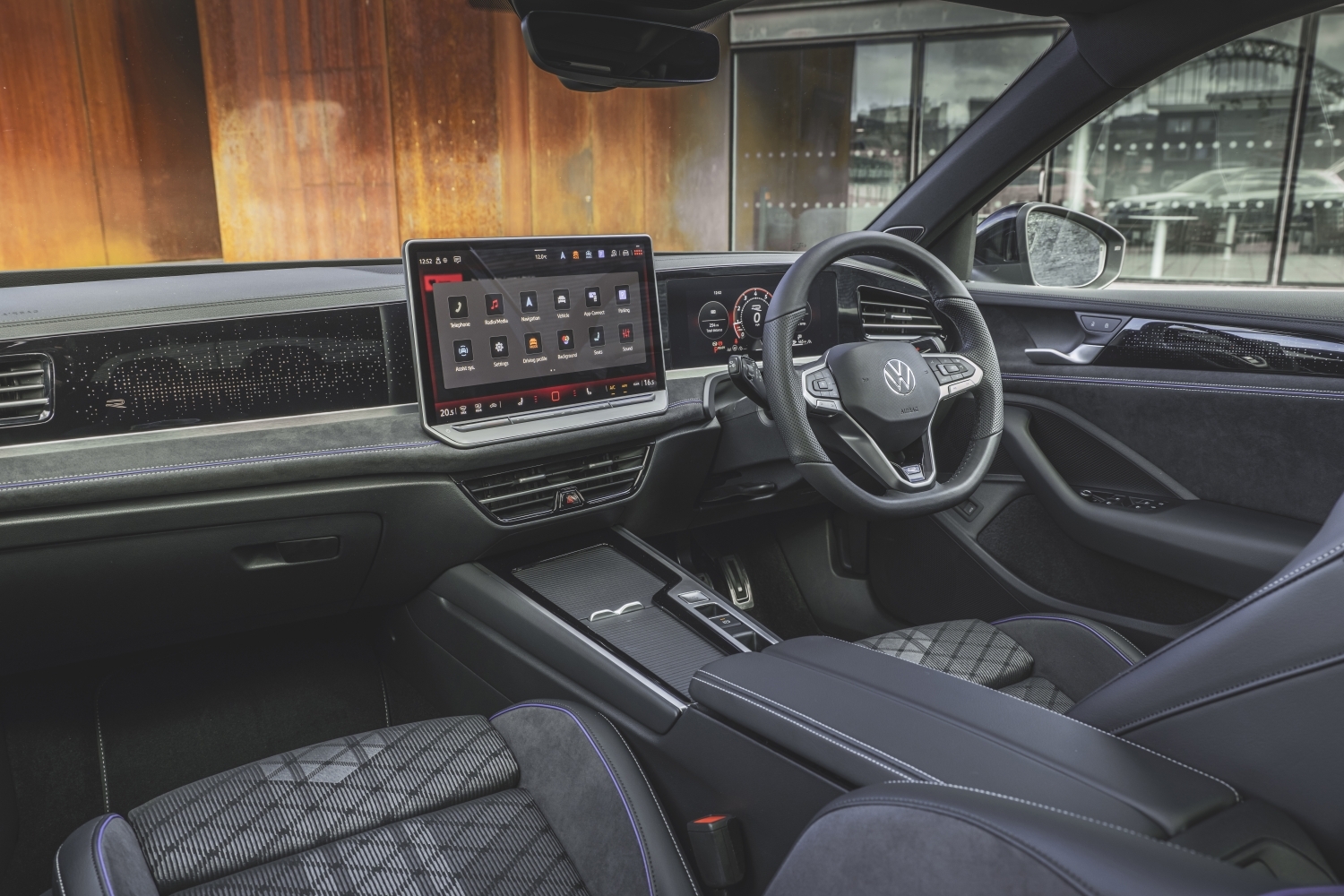
Infotainment, sat-nav, stereo and connectivity
All Passats get the same infotainment offering unless you hit the options list. It’s a 12.9-inch touchscreen running VW’s latest ‘MIB4’ operating system. Although that’s hardly a small screen as it is, you can option a Tesla-like 15-inch display if you want the full tech-fest vibe.
Both systems are considerably easier to use and less laggy than earlier versions of VW’s more recent touchscreen attempts. The menus are generally logical, too, although the voice assistant is by no means perfect, and while Volkswagen has finally backlit the touch-sensitive climate control sliders below the screen so they’re usable at night, physical climate switchgear (like that you’ll find in the latest Skoda Superb) remains our preference for usability.
If you option that larger touchscreen you also get a head-up display, which is clear and gives you plenty of information without being distracting. A digital driver’s display is standard across the range and gives you a good level of information and configuration. The only thing missing is the physical drive mode selector-cum-volume control found in the latest Tiguan – it would’ve added to the Passat’s ease-of-use.
You’ll find four USB connectors spread across the front and rear of the cabin, although Apple CarPlay and Android Auto are connected wirelessly. Every Passat also gets wireless smartphone charging, and while the eight-speaker sound system is decent enough we can certainly see the appeal of the 11-speaker Harmon Kardon upgrade.
How practical is the Volkswagen Passat?
The Passat might be considered a rival to cars like the BMW 3 Series Touring, but in practicality terms it’s in a different league.
This new model has again grown in external size, with dimensions of 4.92m in length, 1.85m in width and a touch under 1.5m in height. That’s a substantial 144m longer than before, with 50mm of that added to the wheelbase (the space between the front and rear wheels.
That puts it at a similar size to the Skoda Superb, and that’s certainly evident when you step inside. The largest and broadest adults with have plenty of room up front, but the most significant upgrade is to rear-seat accommodation.
Put simply, it’s vast – almost limo-like in terms of legroom. It doesn’t matter if you’re well over six foot and sitting behind a similarly lanky driver, as you’ll still have plenty of room to get comfortable. There’s far more legroom than in a 3 Series, A4 or C-Class, for example.
You’ll also have a good amount of headroom – helped by the lack of a sloping roofline – although it’s worth sitting in a model fitted with a panoramic glass roof before ordering one as this drops the interior roof height down. Three adults can fit across the back, too, as although there’s a chunky transmission tunnel to straddle the footwells are roomy.
There are three ISOFIX points (one in the front passenger seat and two in the rear) and plenty of space for even a bulky rear-facing child seat. The Passat’s wide opening doors also aid access, but bear in mind the higher seating position of an SUV makes it easier to get your kids in and out.
The only practicality black mark is the lack of a 40/20/40 split-folding seat which you’ll find in some estate alternatives. At least VW gives you a ski hatch to load long items (like, well, skis) and you can pop the rear seatbacks down via boot-mounted levers.
Storage and boot space
A key change in the front of the Passat is the movement of the gear selector from the centre console to the steering column. This setup – first brought in on the brand’s EV models – isn’t to all tastes but frees up plenty of space in the area between the front seats. You’ll now find two sliding lids housing two high-grip cupholders and a phone storage and charging area, along with a vast space under the front armrest.
What’s more, the door bins and the glovebox (both felt-lined for a premium touch) are a chunky size. The door bins in the rear are smaller but still usable, while you also get cupholders in the centre armrest, pockets in the rear seatbacks and smaller phone holding pockets above those. Oh, and you also get built-in sunblinds in the rear windows - ideal for family life.
The old Passat’s boot was hardly found wanting for space, but the new car’s boot grows by another 40 litres to a simply vast 690-litre load space with the seats up, and by 140 litres to 1920 litres with it down. Great, right? Well, it’s worth noting that figure only applies to the petrol model.
Opting for one the plug-in hybrids takes the seats up capacity down to 530 litres because of the space the battery takes up. It comes at the expense of the petrol’s adjustable height boot floor, too – the hybrids have a higher fixed boot floor, but at least there’s enough space underneath for the charging cables. All Passats also get an electric tailgate to aid access, too.
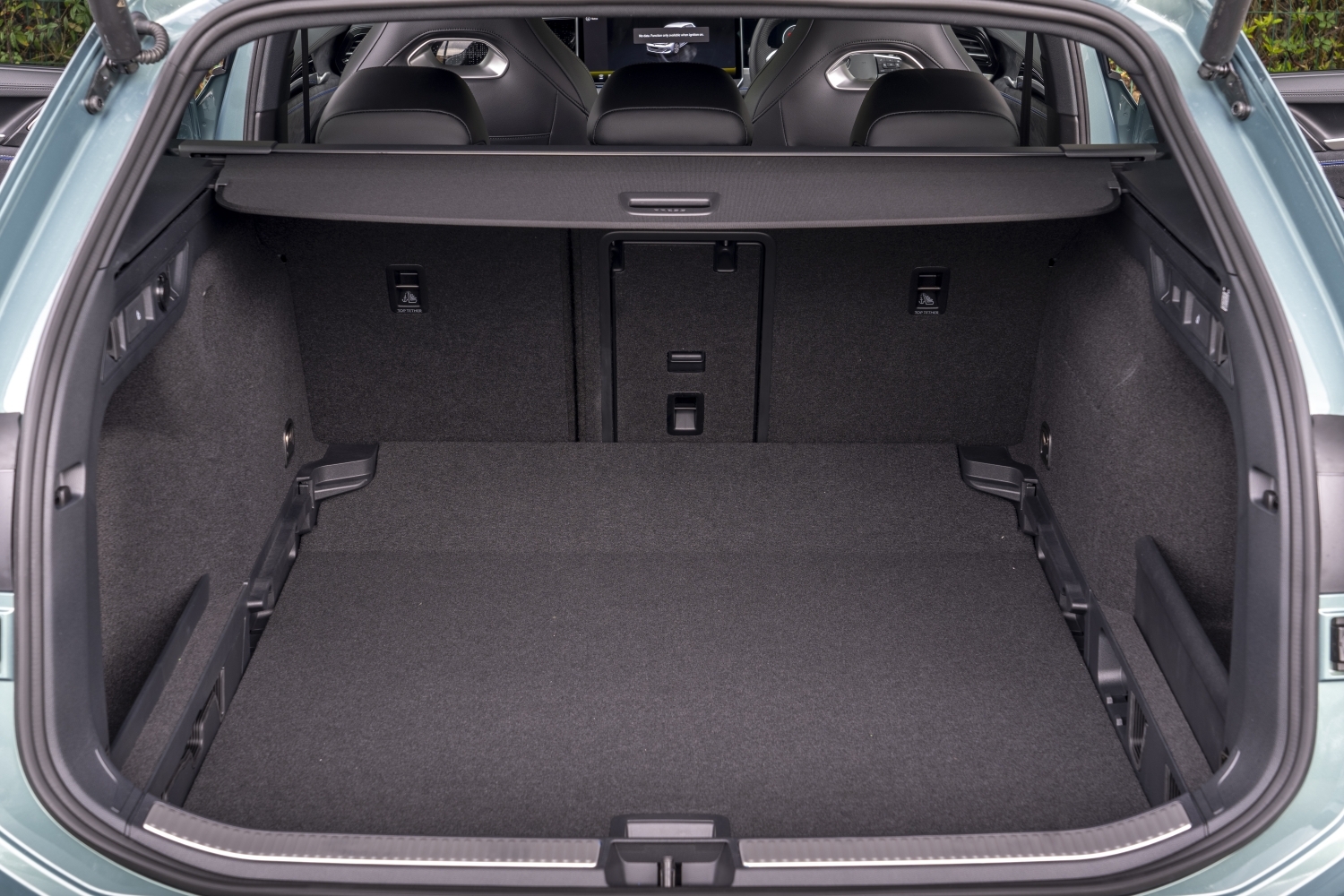
Performance & drive: What is the VW Passat like on the road?
Only a decade ago a whopping 95% of Passats sold in the UK were fitted with a diesel engine. Now, you can’t even order a diesel Passat. That’s as big of a sign of the changing times as anything.
Shod of its traditional oil-burners the Passat range is hardly extensive. There’s one mild-hybrid petrol engine and two plug-in hybrids – all based around the venerable 1.5-litre TSI turbo petrol engine.
The 1.5 eTSI base unit – the one targeted at private buyers – puts out 150hp for a 0-62mph time of 9.2 seconds. It’s mated to a now-commonplace 48-volt mild-hybrid system which harvests kinetic energy from braking, using that to boost acceleration at low speeds, as well as improving the stop-start system’s capabilities and allowing engine-off coasting when you lift off the throttle.
Performance is no more than acceptable. It’ll get up to motorway speeds without too much fuss (if a bit noisily when the revs build) which is fine in isolation, but when you’re up against much punchier petrols from BMW and Mercedes it feels a bit lacking.
We’ve yet to try the plug-in hybrids (PHEVs), but the on-paper performance suggests these will feel more effortless with the proper EV assistance – the electric motor alone can put out 115hp, meaning the circa-300kg weight penalty is offset.
Of more significance is the massive boost in range: with up to 80 miles quoted from a 19.7kWh battery you’ll be spending a lot more time in electric mode, while the bonus of being able to charge it using 50kW DC rapid chargers means you needn’t have a flat battery on long journeys.
All Passats are now automatic, too, with the mild hybrid using the usual seven-speed DSG gearbox and the plug-in hybrids using a six-speed unit.
Power, 0-62mph times
- VW Passat eTSI 150 : 150hp/ 9.2 seconds
- VW Passat eHybrid (204): 204hp/ 7.8 seconds
- VW Passat eHybrid (272): 272hp/ 7.1 seconds
Ride and handling
Like the related Superb, the Passat is designed from the get-go as a motorway cruiser, with comfort and refinement prioritised over razor-sharp handling. You’ll still want a BMW 3 Series if back-road entertainment matters more to you.
Life and Elegance models get passive suspension as standard, which does a good job of isolating occupants from rough roads and low-speed potholes. On faster roads is where it excels most, being noticeably smoother than a 3 Series and slightly more cushioned than the Skoda Superb.
If you want a greater spread of abilities then we’d recommend R-Line trim, which comes with adaptive suspension. While the 15 levels of adjustment via the touchscreen is overkill, there is a noticeable change between the Comfort and Sport ends of the spectrum.
It certainly doesn’t turn the Passat into a sports car, but it’s very capable. It’s also worth noting that both the ride and handling are noticeably better than in a similarly priced VW Tiguan if you’re weighing up going for an SUV or an estate.
Noise and refinement
We’ve not experienced entry-level Life trim, but it’s unlikely to be a noisy motorway companion. Elegance trim and above, meanwhile, get laminated side windows, resulting in an impressive lack of wind noise at high speed. Road noise is also well-suppressed over all but the worst surfaces.
As we mentioned, the 1.5-litre petrol engine gets a bit raucous when you work it hard. But when you’re not accelerating it settles down to near silence. Nevertheless, it’ll be the electric silence of the PHEVs that relax you the most.
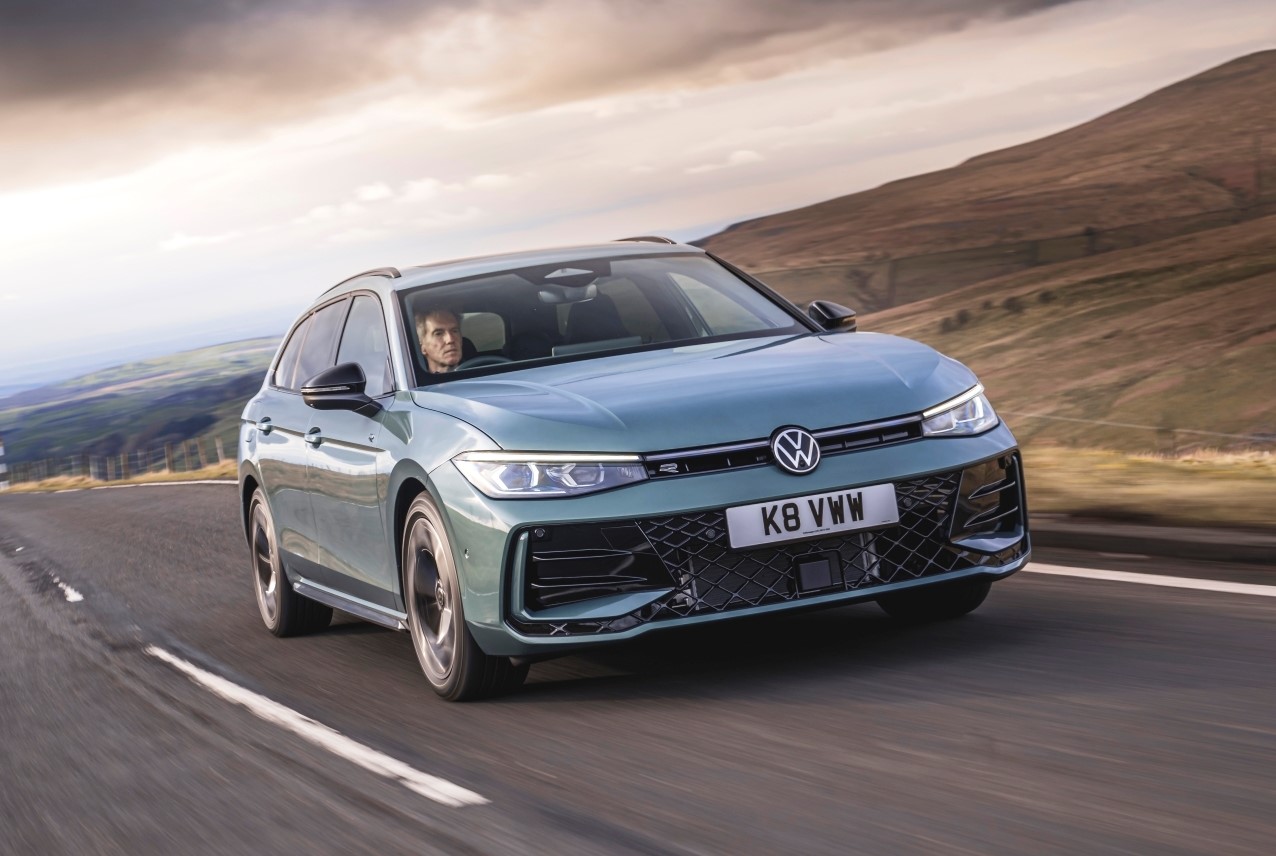
Euro NCAP: is the Volkswagen Passat a safe car?
The VW Passat is among the safest family cars on sale, being awarded the maximum five-star safety rating by crash test body Euro NCAP. Interestingly, the (very strong) category scores for occupant protection, vulnerable road users and safety assists are identical to those of the (clearly very closely) related Skoda Superb.
It’s worth noting that the Volkswagen ID.7 (an electric car very similar in size to the Passat) has even higher occupant protection scores if you’re fanatical about safety. Still, it’s a strong result.
Every Passat comes equipped with automatic emergency braking with pedestrian and cyclist detection, traffic sign recognition, advanced driver monitoring and adaptive cruise control, while blind spot monitoring is another welcome standard fitment.
Running costs and fuel economy
With the demise of a fuel-sipping diesel option, VW has had to improve the Passat’s petrol offering to make it desirable to cost-conscious private buyers.
All Passats now have some form of hybridisation, with the mild-hybrid technology in the 1.5 eTSI petrol giving it a claimed 10% improvement in official figures – up to 52.3mpg combined. While that can’t match the old diesels, a 66-litre fuel tank results in a theoretical range of nearly 760 miles, which is useful if you do regular long trips.
The official figures of the plug-in hybrid versions really illustrate how far this tech has come in the last few years. Both eHybrid versions promise up to 706mpg on the combined cycle, massively up from the sub-200mpg the old Passat Estate GTE offered.
As usual with plug-in hybrids, take those figures with a generous pinch of salt: you’ll only see anything like that if your journeys are within the car’s all-electric range. But with the big jump in range potential (more than double the old GTE) you’re more likely to achieve three-figure miles-per-gallon on a regular basis.
Arguably the biggest selling point of the Passat eHybrid is for business users, which benefit from an impressively low 5% Benefit-in-Kind tax rating thanks to official CO2 emissions of just 8g/km. Only the Skoda Superb with the same powertrain manages that – rivals from BMW and Mercedes-Benz sit in the higher 8% bracket.
How much does the Volkswagen Passat cost to insure?
Insurance costs for the VW Passat appear to be higher than several key rivals. The entry-level Life model with a 1.5 eTSI petrol engine sits in insurance group 30, with the plug-in hybrid models range from group 36 to group 40 depending on spec and power output. A Citroen C5 X should be considerably cheaper to insure, for example.
Volkswagen Passat FAQs
Is the VW Passat being discontinued in the UK?
No, only the saloon version of the VW Passat has been discontinued. The estate version has been renewed for another generation and will continue for some years yet. Volkswagen also offers the more stylish Arteon if a saloon is a must-have for you, or the ID.7 as an all-electric alternative.
Is the Volkswagen Passat a good car?
Yes, the Volkswagen Passat is a great all-round large family car with plenty of space, a high-quality interior and excellent comfort and refinement levels. It’s also efficient, packed full of technology and quite discreet.
Will the new Passat have a diesel engine?
There are no plans to offer the 2024 VW Passat with any diesel engines in the UK. Volkswagen has chosen to only offer the 1.5 e-TSI mild hybrid petrol engine, or a pair of plug-in hybrids promising up to 730mpg and 80 miles of electric range.

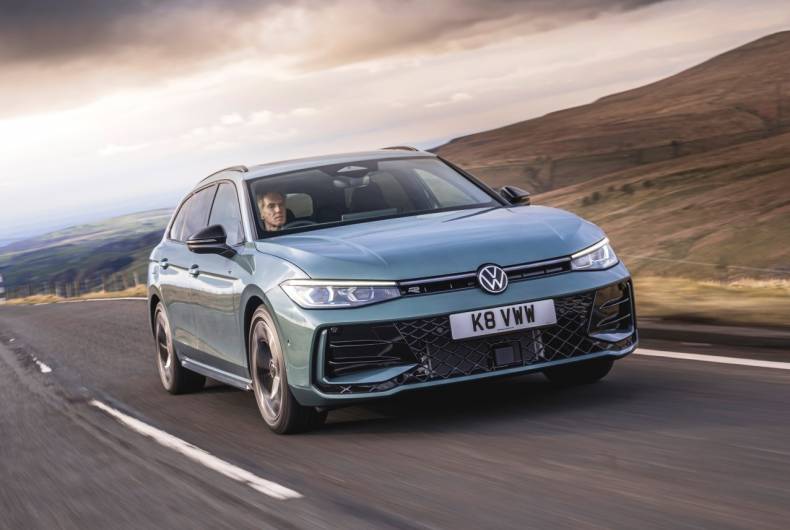

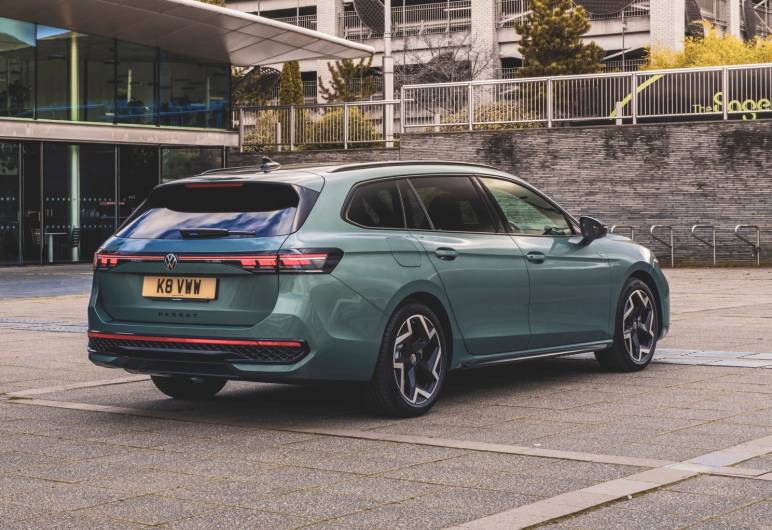
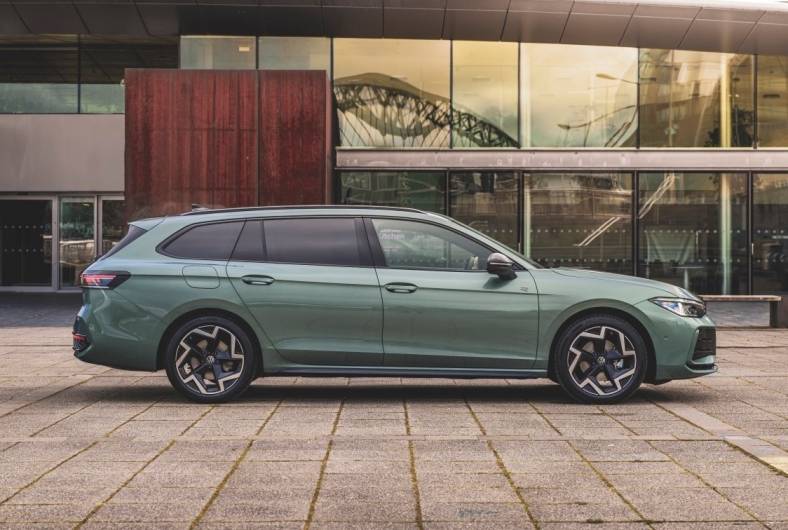
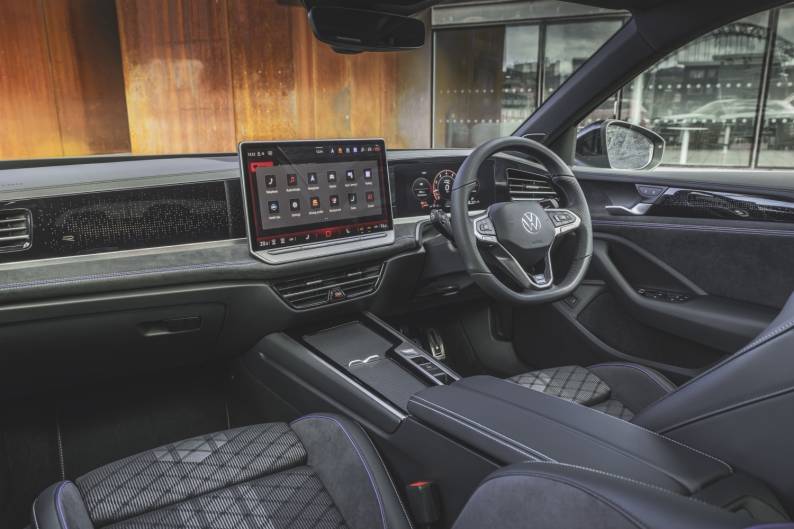




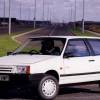

![Ford Focus [MK2] [C307] (2008 - 2011) used car review](https://d1ix0byejyn2u7.cloudfront.net/drive/images/made/drive/images/remote/https_d2yv47kjv2gmpz.cloudfront.net/filestore/4/4/1/1_bc1fb944f44451d/4ac7aa743e22f0ba5e2a6d7e4d24a1d8/1144_344cb8801d03d1d_100_100_70_c1_c_c.jpg)